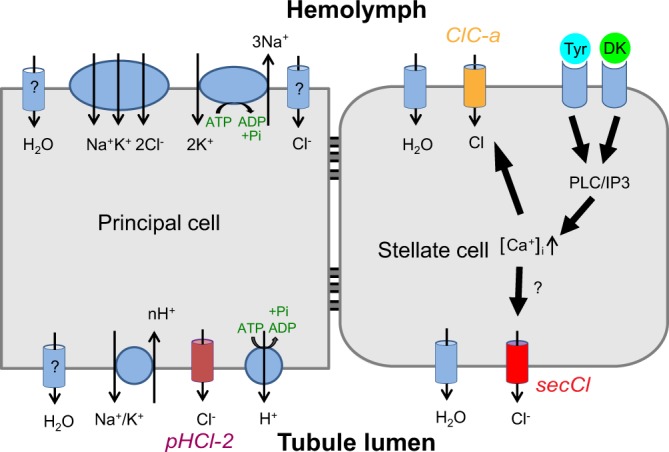Figure 7.

Model: The role of secCl within the tyramine/leucokinin diuretic pathway. A model describing the role of secCl within the signaling pathways of the diuretic hormones tyramine (Tyr) and Drosophila leucokinin (DK). Diuretic hormones bind to their respective GPCRs on the basolateral membrane of stellate cells, which triggers the release of calcium from intracellular stores via the PLC/IP3 pathway. Through an unknown mechanism, this rise in intracellular [Ca++] results in the activation of ClC-a (orange), and secCl (red). ClC-a, localized to the basolateral membrane, provides necessary Cl− entry into the cell from the hemolymph and secCl, localized to the apical membrane, provides a route for Cl− exit into the lumen. FSRs increase as a consequence of increased chloride secretion.
